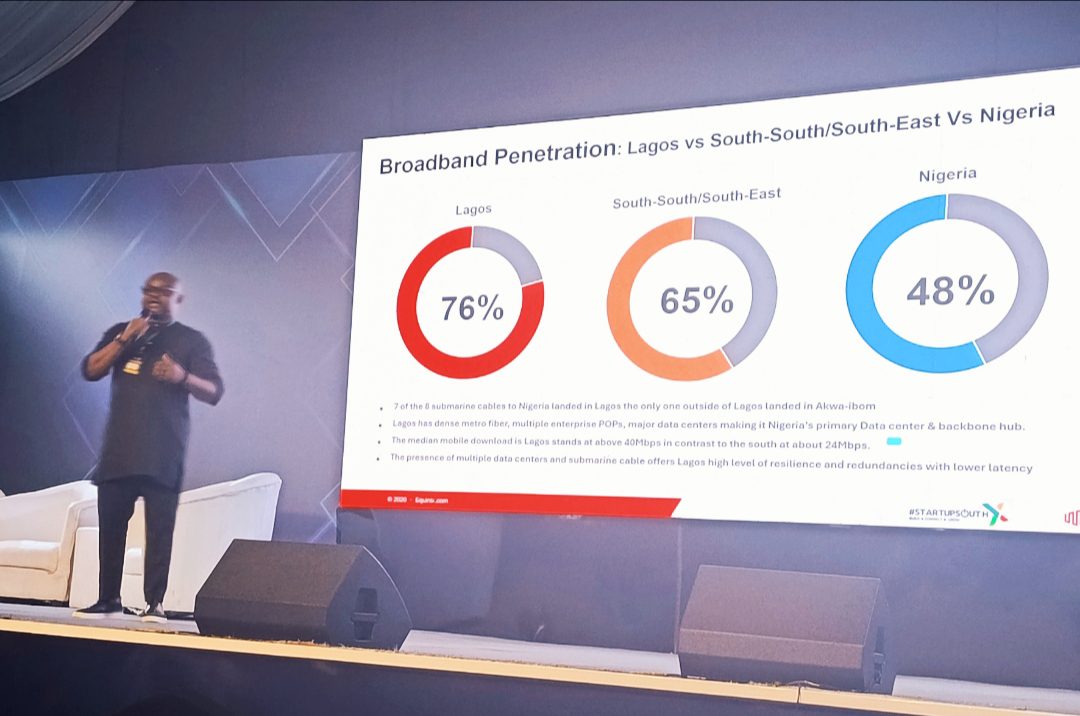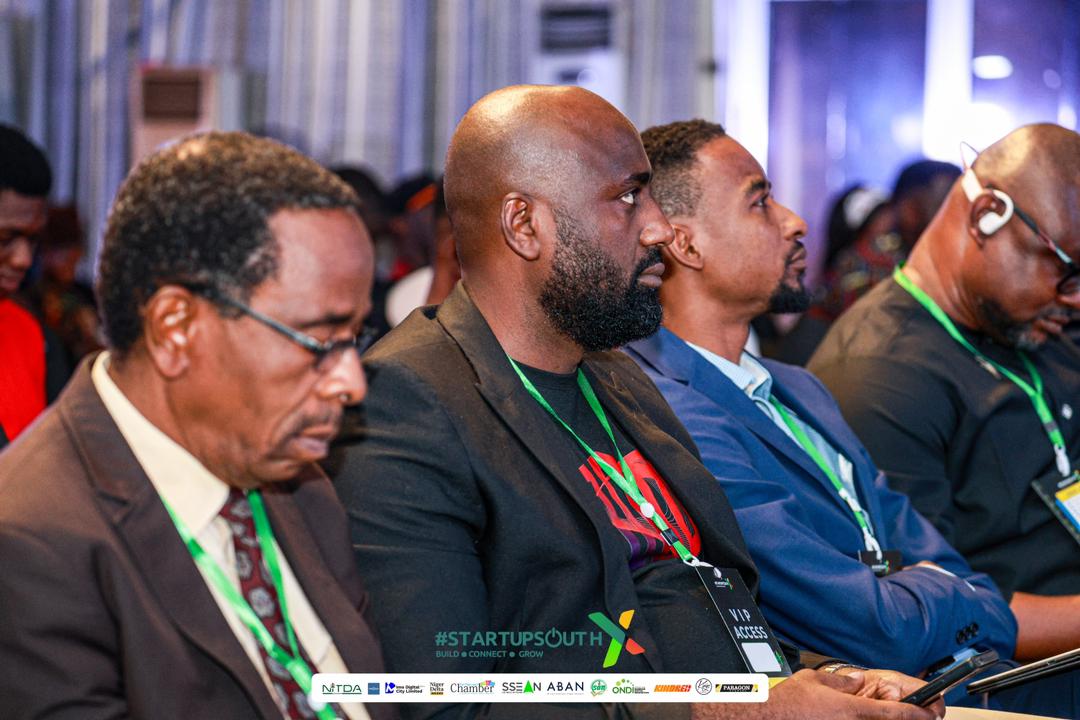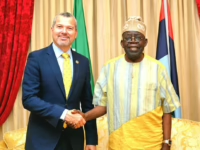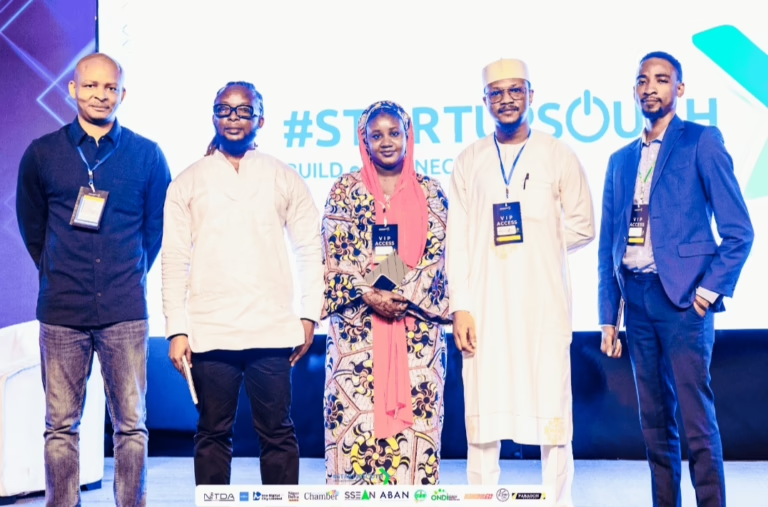At the tenth edition of #StartupSouth held in Port Harcourt, discussions around innovation, policy frameworks, and infrastructure development all revolved around a pivotal concept: connectivity as the key to future success. Historically, the South-South and South-East zones of Nigeria have been eclipsed by Lagos, which remains the dominant force in the nation’s startup and tech landscape.
However, Ikechukwu Mamah, Senior Manager of Network Services Delivery at Equinix West Africa, confidently proclaimed in his keynote speech that this dynamic is on the verge of transformation.
His presentation, titled “Accelerating Boundless Connectivity in South-South Nigeria,” set an optimistic tone for the event.
Following Mamah’s address, a panel discussion titled “Expanding Digital Infrastructure: Leveraging Digital Networks & Emerging Technologies for Competitive Advantage” featured experts including David Mosaku from Equinix West Africa, Zahira Yerima, Bernard Ewah representing NITDA, Obinna Onyejeli of MyAddy, and Ahmad Mukoshy from NIRA, with TechNext’s Blessed Frank moderating.
Their collective perspectives highlighted a region poised for a digital revolution-provided that all stakeholders act decisively.
Connectivity: The reasons behind Lagos’ dominance and the emerging shift
“What makes Lagos the epicenter of technological activity?” Mamah questioned. “It’s fundamentally about connectivity. Talented young people abound throughout the South-South and South-East, but without access to robust infrastructure, their potential remains untapped.”

Currently, Lagos boasts broadband penetration rates near 70%, significantly surpassing the national average of 48%. In contrast, the South-South and South-East regions lag behind, with figures ranging between 40% and 65%. This gap largely stems from the physical infrastructure-specifically submarine cables-since seven out of Nigeria’s eight submarine cables terminate in Lagos.
But a transformative development is underway. “Through the 2Africa initiative, Equinix has successfully installed the first submarine cable landing in the South-South region,” Mamah revealed. “This milestone signals a paradigm shift. The pressing question now is: are we prepared to capitalize on this opportunity?”
The 2Africa cable, which has landed in Akwa Ibom and is being extended to Port Harcourt, will triple Nigeria’s internet capacity. This advancement means that South-South cities will no longer need to route their digital traffic exclusively through Lagos.
Mamah emphasized the cascading impact of this infrastructure. “Landing a cable is just the beginning; the bandwidth must be transported from the ocean floor to offices, educational institutions, and healthcare facilities. Achieving this requires government approvals. Unfortunately, in this region, right-of-way fees are often twice the federal government’s standard.”
He stressed that policy reform is as vital as physical fibre deployment. “Strategic government involvement is essential to replicate Lagos’ connectivity success in the southern parts of Nigeria.”
Equinix is actively extending the Akwa Ibom landing to Port Harcourt and constructing a Tier III data centre-the first of its kind in the area-set to open in the near future.
“With unlimited capacity beneath the ocean, infrastructure being brought to your doorstep, and a state-of-the-art data centre in development, the question remains: how ready are you to embrace this change?” Mamah challenged the audience.
For startups, this evolution is monumental. It lowers barriers to entry significantly. “Entrepreneurs will no longer need to relocate to Lagos to access scalable infrastructure, as high-speed, dependable internet becomes available locally,” he explained.

Moreover, the rise of remote work is a game-changer. The future workforce is decentralized. A software engineer in Port Harcourt can collaborate seamlessly with colleagues in global tech hubs like Silicon Valley. As Mamah pointed out, “Talent is abundant here; what’s missing are the opportunities. This infrastructure bridges that gap.”
Panel Insights: Expanding the Digital Backbone
The panelists elaborated on these critical points. David Mosaku highlighted that the new submarine cable landing in the South-South enhances not only speed but also network resilience. “Currently, all traffic funnels through Lagos. If Lagos experiences downtime, the entire system stalls. With the new cables in the South-South, latency decreases, reliability improves, and redundancy is introduced. Lagos is no longer the sole gateway.”
However, physical infrastructure alone won’t suffice. Bernard Ewah from NITDA, speaking via a representative, pointed out policy shortcomings: “Infrastructure often outpaces policy. Right-of-way challenges persist in the South-South. NITDA is developing a National Sovereign Cloud Policy aimed at closing implementation gaps and boosting cloud and data services.”
Innovation sometimes requires rethinking infrastructure itself. Obinna Onyejeli of MyAddy shared how his company developed “Locals,” a digital addressing system.
“We digitally mapped every street in Nigeria and assigned unique codes, addressing the issue of unnamed streets. This innovation unlocks efficiencies in logistics, healthcare, insurance, and government services. For example, during disease outbreaks, Locals can generate heat maps. Infrastructure extends beyond physical cables; it includes digital frameworks,” he explained.
Ahmad Mukoshy, founder of GigaLayer and Executive Director at NIRA, emphasized the need for collaboration. “Government must go beyond policy creation by offering SME support packages, reducing right-of-way fees, and incentivizing startups. Nigerian entrepreneurs are expected to compete globally, matching standards seen in countries like Croatia or Romania. Without strong local infrastructure, this is nearly impossible.”
Visibility emerged as a recurring concern. “Massive investment in marketing, awareness, and information dissemination is crucial,” one panelist noted. “Many existing resources in Nigeria remain obscure, accessible only to those with insider knowledge.”

This lack of awareness can lead to underutilization of even the most impressive infrastructure. Onyejeli reflected, “Our infrastructure is substantial, but many are unaware of its existence or are focused on less impactful pursuits.”
As the session concluded, the message was clear: a concerted effort among governments, private sector players, and startups is essential.
“Collaborative efforts can make connectivity affordable and accessible for startups, enabling them to build and scale,” Mukoshy stated. “Government fee reductions, private investment in data centres, and startup innovation in last-mile connectivity are the keys to extending digital access to rural communities.”
In Mamah’s words: “The opportunities we once thought were out of reach are now within our grasp. The moment to seize them is now.”
For years, ambitious entrepreneurs from Port Harcourt, Uyo, or Enugu faced a tough choice: relocate to Lagos or face limited infrastructure. But with submarine cables landing in Akwa Ibom, new data centres emerging in Port Harcourt, and startups like MyAddy redefining digital infrastructure, that narrative is shifting.
“Is moving to Lagos still necessary?” Mamah challenged. “It’s time to reconsider that assumption.”
The South-South region’s digital revival won’t happen overnight. It demands government commitment, innovative startups, and private sector investment. Yet, #StartupSouthX demonstrated that the foundation is being laid. With limitless connectivity now attainable, the question is no longer IF the South-South will catch up to Lagos, but WHEN.

























0 Comments